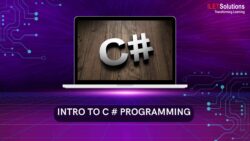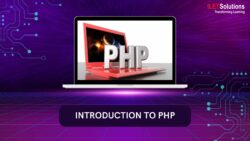By the end of the course, you will understand the fundamentals of Python for Data Analysis.
In this Python Data Analysis Course, you will learn how to:
- Install Python on your operating system
- Import and install numpy
- Use Numpy arrays, operations, and universal functions
- Install Pandas data analysis toolkit
- Use Pandas Series and DataFrames
- Clean and prepare your data with Pandas DataFrames
- Create data visualizations with Pandas
- Install SciKitLearn to make predictions using essential machine learning
- Create and analyze a linear regression model
Once enrolled, our friendly support team is here to help with any course-related inquiries.
Summary
- Skill level: Beginner
- Lessons: 44
- Pre-requisites: None
- Estimated study time: 22h for all materials
- Certificate: Yes
- Accredited by: CPD
- Video duration: 3h 10m
Features
Premium video tutorials
Personalized Learning
Learn at your own pace
Tests and Quizzes
Award winning instructors
Get Certified
Mobile - Learn on the go
Regularly updated content
Accreditations & Approvals
All courses under each learning path are accredited and approved by one or more of the following bodies as is applicable.



Instructors
All courses are taught by reputed trainers with relevant accreditations and industry experience.
Modules
Introduction – What to Expect From the Course
A quick rundown of what to expect from this course, how we’re going to move forward, and the roadmap we’ll follow as we progress through the course.
Installing Python
Let’s start downloading the tools we need for the course, including downloading Python itself.
Installing The Git Bash Terminal
We need one more major tool to do data analysis with Python: the Git Bash Terminal. In this video, I’ll show you how to download and install it.
Setting up a Virtual Environment
A virtual environment is a helpful tool that allows us to install programs and try out code without affecting the rest of our computer. In this video, you’ll learn how to set up your own virtual environment.
Installing and Using Jupyter Notebooks
We’re going to use Jupyter Notebooks throughout the rest of the course to do all our coding, so in this video, let’s install and start using it.
Pip Installing and Importing Numpy
In this video, we’ll download and use our first data analysis tool: Numpy, which stands for Numerical Python.
Numpy Overview – What is It Used for
Before we start coding with Numpy, let’s discuss what it does and how it works. This video will help you understand why Numpy is so important for data analysis.
Numpy Arrays
In this video, we discuss how Numpy arrays work, including how they are much, much faster to work with than regular Python arrays.
Numpy Operations
Let’s discuss mathematical operations we can use in Numpy, including scalars.
Numpy Universal Functions
Numpy has universal functions built into it that we can play with and use. In this video, we’ll discuss square roots, absolute values, exponents, and more.
Installing Pandas and Overview – What is It Used for
Pandas is a powerful Python data analysis toolkit. In this video, we’ll discuss what it does and how it works.
Pandas Series
Pandas series is one of the main “workhorses” of Pandas. We’ll discuss how series work and some of the helpful ways you can use them.
Pandas DataFrames
DataFrames are like spreadsheets, and in this video, we start building and using them.
Selecting Columns and Multiple Columns
We discuss how to select individual and multiple columns within a data frame.
Creating New Columns
In this video, we cover how to add a new column to your data frame.
Removing Columns
Let’s discuss how to use the drop function to remove a column from your data frame.
Deleting Rows
Deleting a row in a data frame is very similar to deleting a column – but with one small difference.
Selecting Rows
In this video, we’ll discuss two different ways to select a row within a data frame, including the loc function.
Selecting Subsets of Rows and Columns
Let’s discuss how to select specific points within your data frames, such as the intersection of a row and column, or multiple points within different rows and columns.
Conditional Selection of DataFrames
Selecting data based on conditionals – such as greater than, less than, equal to, not equal to – is an essential part of data analysis. We’ll discuss that in this video.
Multiple Conditions
In this video, we’ll explain how to select data based on multiple conditional statements.
Changing Indexes
There are times when you may need to reset your index within a data frame, so we’ll explain how that works in this video.
Selecting Specific Cells From Multi-Index
Let’s discuss multi-indexes: what they are, how they work, and how to select data from them.
Dealing With Missing Data
You may encounter missing data while doing analysis. What should you do? In this video, we’ll discuss some helpful alternatives.
Groupby Grouping Data
The groupby function allows us to group different pieces of data together. We’ll discuss the function in this video.
Concatenating, Merging, and Joining Part 1
There are different ways to combine various pieces of data within your data frame. In this video, we’ll discuss concatenating.
Concatenating, Merging, and Joining Part 2
We discuss how to merge and join data frames together in this video.
Operations: Unique Values and Value Counts
In this video, we discuss how to find unique values within a column and how to find value counts as well.
Operations: Apply Method
The apply method allows us to create our own functions and apply them to the data in our columns.
Operations: Sorting, Ordering, and Finding Nulls
In this video, we discuss how to sort and order your data.
Plotting Histograms
In this video, we begin discussing data visualization, and install matplotlib to help us create histograms.
Plotting Area Plots
We discuss how to create another type of data visualization: area plots.
Plotting Bar Plots
In this video, we explain how to create bar plots using your data.
Plotting Line Plots
Let’s create line plots and discuss some of the options you can use to change their appearance.
Plotting Scatter Plots
Scatter plots are a bit more complicated, but can be helpful ways to visualize your data.
Plotting Box Plots
In this video, we discuss how to create your own box plots.
Plotting HexPlots
In this video, we explain what a hexplot is and how to create your own.
Plotting Density Plots
In this video, we discuss density plots, kernel density estimation (KDE) plots, and how to create them.
What Is Linear Regression – Least Squares Method
Let’s start talking about machine learning. In this video, we introduce linear regression and the least squares method.
Linear Regression Installation
We need to install some more elements to do a linear regression, so we’ll discuss what we need in this video.
Split Data into Training and Testing Set
As we begin to set up our linear regression model, we must define testing and training splits.
Train a Linear Regression Model and Fit the Model
In this video, learn how to train a linear regression model and how easy it is to fit the model.
Explore the Coefficents and Intercepts
We’ll take a look at the coeffecients and intercepts we discovered at the end of the last video and explain what they mean.
Make Predictions and Analyze Results
In this video, we’ll learn how to make predictions and analyze results based on the data analysis we’ve performed so far.
Target Audience
- Graduates exploring placement in entry-level Development positions across industries
- Developers needing upskilling to be future-ready or become more productive in their current roles
- Experienced individuals exploring Introduction to Data Analysis Python to join the workforce
How do I Access The Program
- Buy the course online
- Save your payment transaction receipt for any future reference
- Our team will share the credentials to enable you access your course online within 2 business days of payment transfer
Bulk Orders
Incase you are looking for bulk user licenses, or customized Learning Paths for various Job Roles, reach out to us with your detailed requirements.






Reviews
There are no reviews yet.